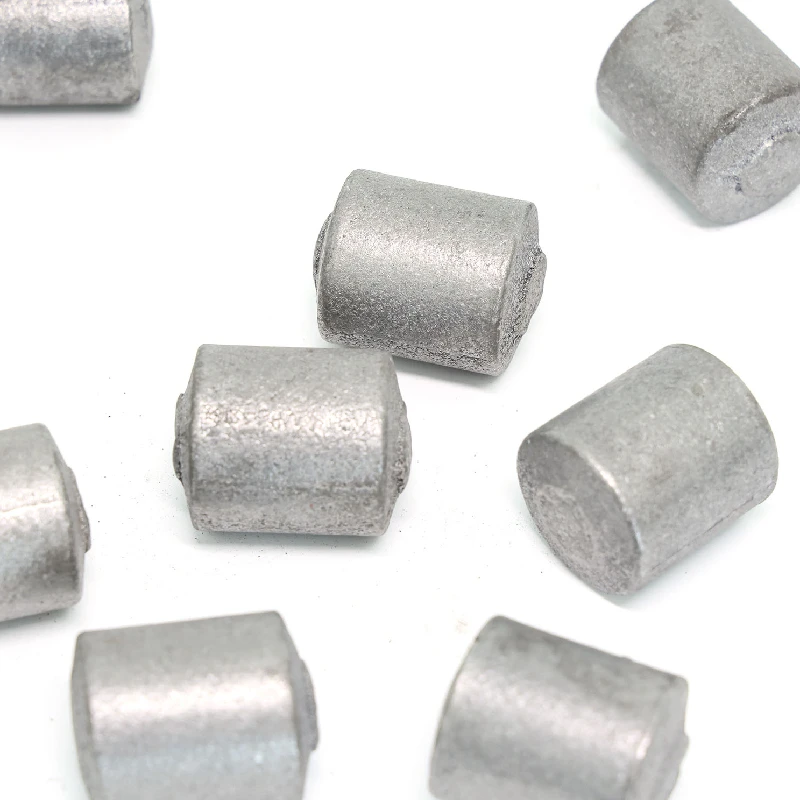Oct . 01, 2025 14:00 Back to list
Grinding Cylpebs Factory: Looking for Wear-Resistant Media?
Inside a Modern Grinding Cylpebs Supply Chain: What Really Matters on the Foundry Floor
If you’ve ever toured a grinding cylpebs factory, you’ll know it’s not just noise and molten metal. It’s a thousand small choices adding up to mill performance. Based in KIZUN Industry Zone, Luquan, Shijiazhuang, Hebei, I’ve spent a fair bit of time with teams producing Low Chrome Grinding Forging cylpebs—actually cast, not forged (industry jargon sticks, I guess). And to be honest, the details matter more than the slogans.

What’s trending and why buyers are picky now
- Shift toward verifiable wear data (not just HRC headlines).
- Lower total media consumption in cement and mining via tighter chemistry control.
- Documented traceability: EN 10204 3.1 is increasingly asked for, surprisingly even by mid-size plants.
- Customization of size (8×10 to 40×45 mm) to tune charge grading; yes, it affects kilowatt-hours per ton.
Process flow at a grinding cylpebs factory
Here’s the condensed but honest version of what happens on the floor:
- Charge selection: low‑phosphorus scrap + pig iron; ferrochrome blended for 10–28% Cr.
- Melting: medium-frequency induction furnace; deoxidation and late alloying to control C/Cr ratio.
- Casting: metal molds for dimensional stability; controlled gating to reduce porosity.
- Heat treatment: oil/water quench + temper. Aim: martensitic matrix with retained carbides (M7C3).
- Finishing: shot blasting, dimensional sorting, crack check (MT per ASTM E1444, in many shops).
- Testing: chemistry by OES; hardness via Rockwell/Brinell (ISO 6508-1 / ASTM E10); abrasion benchmark (ASTM G65, lab-scale).
Low Chrome Grinding Forging — key specs
| Material | Low chrome alloy cast iron |
| Chrome content | ≈10–28% Cr (real-world use may vary by heat) |
| Size range | 8×10–40×45 mm |
| Processing type | Casting + quench/temper |
| Surface color | Black (as-blasted) |
| Typical hardness | HRC 52–58 (ISO 6508-1) |
| Abrasion reference | ASTM G65 wear loss: ≈180–260 mg (Procedure A, lab) |
| Breakage rate | <0.5% in field audits, cement mills |
| Service life proxy | Wear rate ≈50–70 g/t (cement); ≈300–600 g/t (sulfide ores) |
Applications and what users report
Industries: cement plants, mining mills (Cu/Au/Fe), chemical and refractory grinding, sometimes petroleum catalysts. Many customers say the sweet spot is stable hardness with low spalling during high-impact starts—sounds basic, but it’s crucial.
Two quick case notes
- Cement, Southeast Asia: switching to 25×35 mm cylpebs improved first-chamber efficiency; media consumption down ≈12%, kWh/t down ≈4% over 90 days.
- Copper concentrator, Andes: revised charge grading (20/25/30 mm) cut circulating load spikes; breakage claims near zero for two quarters—operators liked the consistency.
Vendor comparison (what I actually check)
| Vendor | Traceability | Hardness range | Lead time | Customization |
|---|---|---|---|---|
| CD Chengda (Hebei) | EN 10204 3.1, heat-by-heat OES | HRC 52–58 | ≈15–25 days | Sizes, Cr %, packing, logos |
| Regional Foundry B | Basic COA only | HRC 50–56 | ≈25–35 days | Limited sizes |
| Trading House C | Mixed (varies by source) | HRC 50–60 (variable) | Stock-dependent | MOQ constraints |
Customization and documentation
Options include Cr content tuning (≈10–28%), size grading, packaging, and MTCs to EN 10204 3.1. Hardness is verified per ISO 6508-1; Brinell cross-checks (ASTM E10) are common. A good grinding cylpebs factory will also share microstructure photos and drop-test protocols (e.g., 3 m × 20 drops).
Bottom line: pick chemistry you can trace, heat treatment you can verify, and wear data tied to your ore or clinker. Marketing is nice; mill throughput is nicer.
- ISO 6508-1:2016 Metallic materials — Rockwell hardness test
- ASTM E10-18 Standard Test Method for Brinell Hardness of Metallic Materials
- ASTM G65-16 Standard Test Method for Measuring Abrasion Using the Dry Sand/Rubber Wheel Apparatus
- EN 10204:2004 Metallic products — Types of inspection documents (3.1 MTC)
- ISO 9001:2015 Quality Management Systems — Requirements
-
Expert Insights on Fabrica de Molinos de Bolas: Industry Trends & Global Applications
NewsNov.24,2025
-
Expert Insights on Fabricantes de Bolas de Molienda de Acero: Global Applications & Trends
NewsNov.23,2025
-
Leading Fabricantes de Bolas de Molienda: Your Ultimate Guide to Grinding Balls
NewsNov.23,2025
-
Fabricante de Bolas de Molienda – Quality Grinding Balls for Efficient Industry
NewsNov.23,2025
-
Trusted Proveedores de Medios de Molienda for Efficient Industrial Grinding
NewsNov.22,2025
-
Proveedores de Bolas de Molienda: Your Guide to Top Grinding Ball Suppliers & Industry Insights
NewsNov.22,2025
Realted Products
















